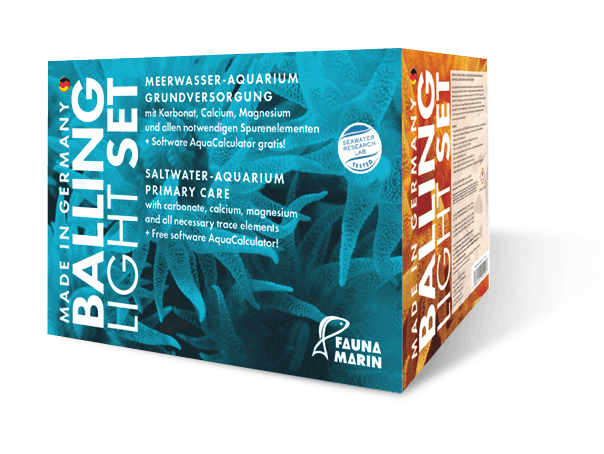Lithium
Lithium is an alkaline light metal and is found in high quantities in natural seawater. Corals take up lithium in skeleton and tissue. A biological function is currently not proven. There are unconfirmed reports that certain algae can be controlled by high concentrations of lithium. However, we could not confirm this with several experiments.
What’s that:
Lithium is a microelement and is occasionally found in high concentrations in aquaria. Especially the use of cements lead to significantly increased values, but also the use of special magnesium solutions for algae control. Values above 500 µg/l (0,26 US.liq.gal.) should be reduced by partial water changes and reduction of the sources.
Problems:
None
Measures:
Too low values reduce the hardness of the coral skeleton
Indicator species:
None, possibly soft growth tips of SPS corals, but this can also be triggered by too low fluorine and/or strontium concentration.
Value too high:
Too high measured values up to approx. 500 µg/l(0,26 US.liq.gal.) are not critical. Values above 500 µg/l(0,26 US.liq.gal.) should be reduced by partial water changes and reduction of the source.
Value too low:
Partial water change with Professional Sea Salt, dosing via Elementals Trace Li up to the reference value.
| Variety | Alkali light metal |
|---|---|
| Benefit | not direct |
| Reference value | 150–180 µg/l (0,26 US.liq.gal.) |
| Application Level | orange |
| Source | cement, ceramics, decoration Magnesium preparations |
| Available | Elementals Trace Li, Prof. Sea Salt, Color Elements |
| Importance 1–6 | 1 |
| Detection quality | safe |

Balling Light:
Lithium is introduced and kept stable in our systems via the sea salt.
As the consumption in reef tanks is very low, the supply via sea salt mix and the input via feed is sufficient. Too small quantities result from the use of unsuitable salts. A change to Fauna Marin Professional Sea Salt is therefore advisable. Experience shows that these simple salt mixes mostly lack more elements than just lithium. Manufacturers of cheap sea salt mixtures like to save expensive elements, often with reference to their unproven biological effect. However, since we generally know little about all the functions of the elements within a reef aquarium, we see a sense in building up the sea salts in a way that all the elements of natural seawater are provided. We have a holistic view of the aquarium biology from bacteria to fish. Therefore we don’t consider simple standard mixtures as sufficient.
Lithium is a component of reef cements and other adhesives. It is also sometimes found in ceramics and artificial living rock. If values are consistently too high (over 500 µg/l), the sea salt used should also be investigated. A dosage above the natural value makes no sense.
Values that are too high can only be reduced by partial water changes and removal of the source (decoration, cement).